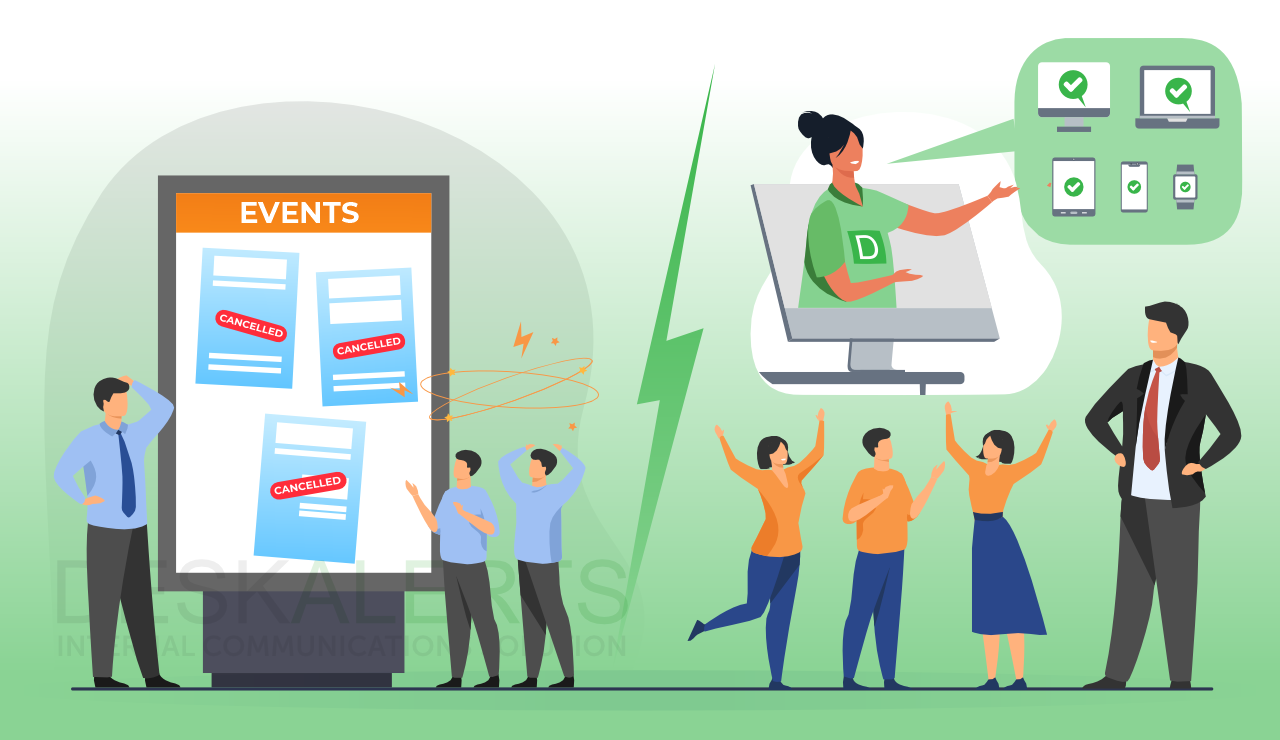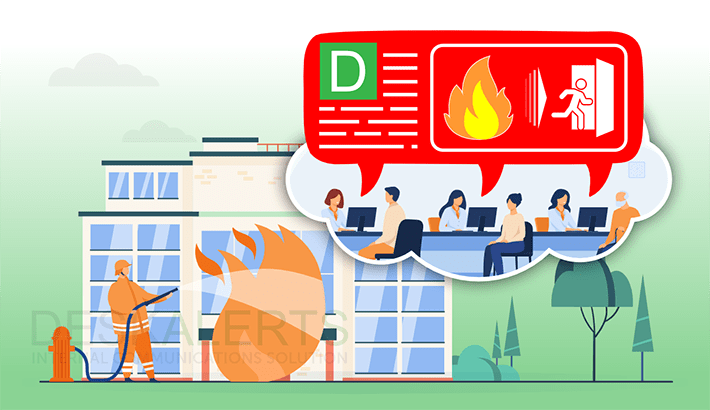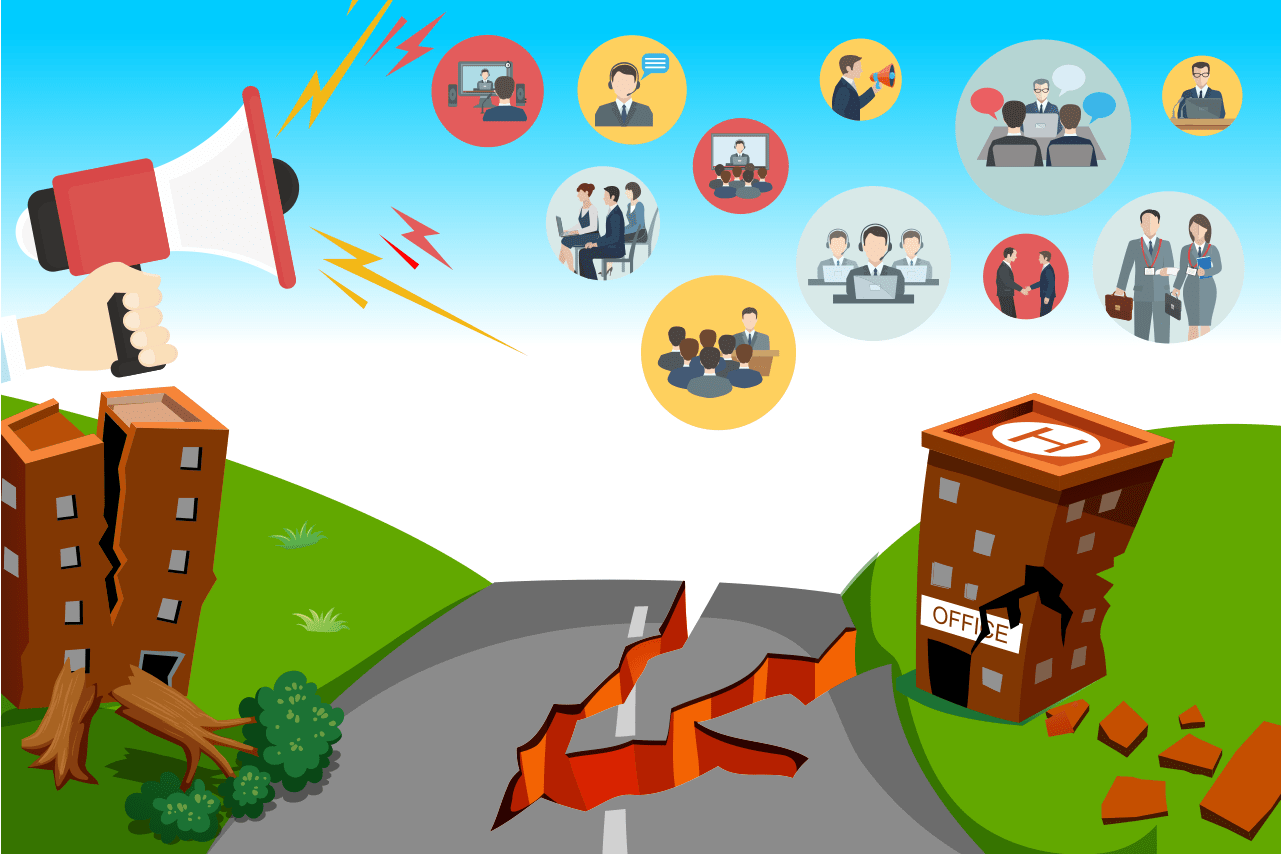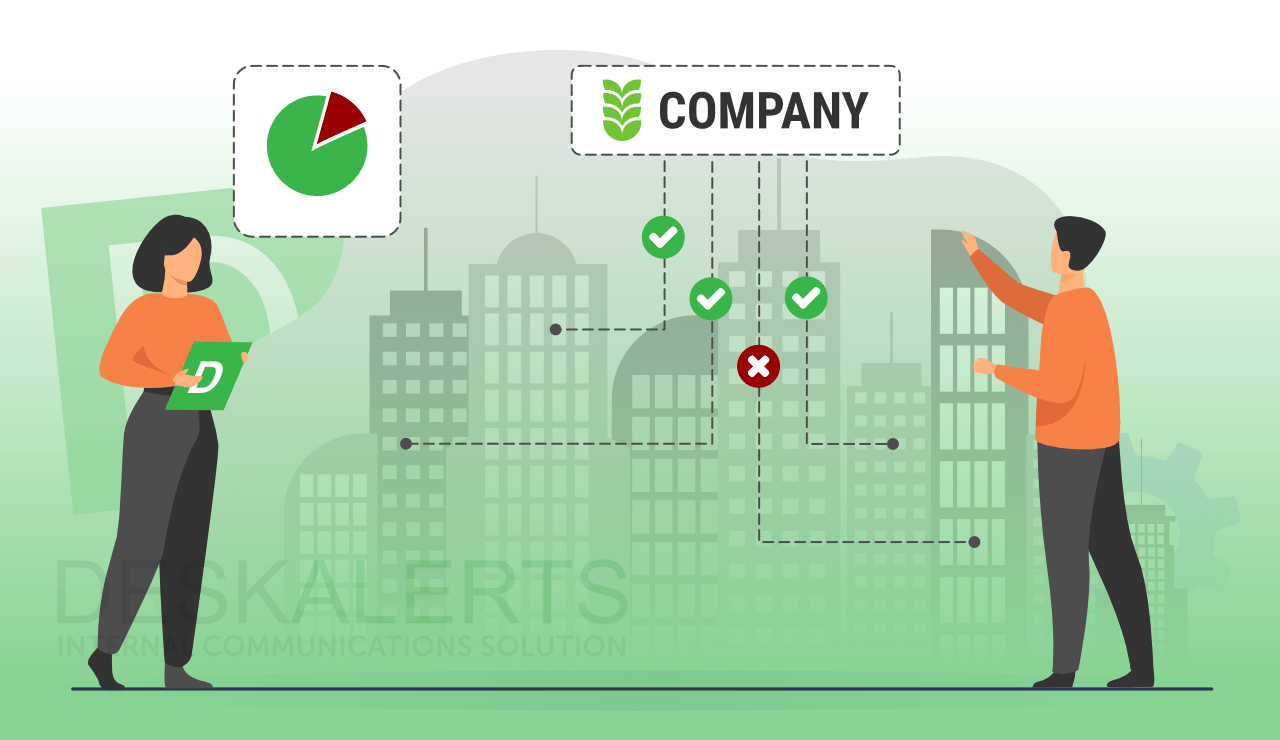
Establishing effective communication systems in your organization is critical to achieving successful outcomes for the company. It ensures crucial information reaches employees promptly and efficiently, leading to a cohesive team working towards the same goals.
In the past, traditional communication notification methods such as emails, memos, and notice boards served as the primary means of disseminating information. However, with the advancements in technology, modern digital internal communication solutions like DeskAlerts have emerged to address the limitations of traditional methods.
Table of contents
What are the most common traditional notification tools?
DeskAlerts: an innovative alternative to traditional notification methods
What are the most common traditional notification tools?
Certain traditional communication notification methods have been used for decades to disseminate information within organizations. While these methods have often served as the primary means of communication in the past, they come with limitations that can hinder the effective and timely delivery of information.
1. Email
Email has long been a fundamental tool for communication in businesses. It is a convenient and versatile channel that facilitates the exchange of information, documents, and updates. However, emails can:
- Easily get lost in a cluttered inbox, leading to important messages being overlooked or delayed.
- May not be seen immediately as recipients may not check their emails frequently, further hindering timely communication.
- Be difficult to distinguish as urgent when the sender fails to mark it accordingly.
- Become caught in spam filters, even when they are legitimate, causing recipients to miss essential information.
2. Memos
Memos are written notices typically used for internal communication within an organization. While they are useful for conveying formal announcements, their distribution relies on their physical placement on notice boards or to individual employees. This method can be inefficient, as important memos might not reach all intended recipients promptly. These limitations include:
- Distribution challenges - memos are usually printed or sent via internal mail, which can lead to delays in delivery, especially in large organizations with multiple departments or remote locations.
- Reliance on physical copies in the digital age is inefficient and wasteful, and some employees may lose or misplace the memos.
3. Notice boards
Notice boards are commonly found in office spaces or common areas in places such as factories, retail stores, worksites, and healthcare organizations. They serve as a centralized point for displaying announcements and updates. However, they come with certain drawbacks:
- Employees who work remotely or in different locations may not have access to the notice boards, leading to communication gaps.
- Notice boards have a limited amount of surface space, making it challenging to display a comprehensive range of information.
- Notice boards might not always be updated promptly, and critical information may not be posted in a timely manner.
4. Face-to-face meetings
In-person meetings are typically used for communication as they offer real-time interaction, facilitate better understanding through non-verbal cues, build rapport, and encourage immediate feedback. While they have been a long-standing method of communication, they have their limitations as well:
- Meetings require scheduling and preparation, which can take up valuable time that could be used for other tasks.
- Scheduling conflicts or absenteeism can lead to incomplete information dissemination.
- Important details discussed in meetings may not always be accurately recorded or distributed to all relevant parties.
5. Telephone calls
Phone calls have been a popular way to communicate directly with employees. Telephone communication provides quick and direct interactions, enables immediate responses, and fosters a personal connection. However, there are also limitations with this method:
- Employees may not always be available to take calls, leading to missed communication opportunities.
- Unlike written communication, phone calls do not leave a paper trail, making it challenging to track and verify information shared.
- Verbal communication can sometimes lead to misunderstandings or misinterpretations of information.
6. Posters and flyers
Posters and flyers have traditionally been used for internal communication due to their visual impact, ability to reach a broad audience, and cost-effectiveness in conveying essential information within the workplace. However, limitations include:
- Visual clutter with too many posters can overwhelm employees and reduce the impact of individual messages.
- Like notice boards, posters, and flyers are typically one-way communication with no opportunity for interaction or feedback.
- Constantly printing and distributing physical posters can be wasteful and environmentally unfriendly.
DeskAlerts: an innovative alternative to traditional notification methods
DeskAlerts is a modern communication notification software system designed to overcome the shortcomings of traditional notifications. It offers various features that enhance communication efficiency and message delivery. Here’s how DeskAlerts stacks up against traditional notification methods:
1. Real-time alerts
DeskAlerts provides real-time notification alerts that appear directly on employees' computer screens, ensuring instant visibility and attention to important messages. This eliminates the risk of messages being lost in crowded inboxes and guarantees prompt communication.
2. Multiple communication channels
DeskAlerts is an all-in-one solution and supports multiple communication channels, such as desktop alerts, SMS messages, scrolling desktop tickers, digital signage displays, mobile push notifications, and emails. This versatility allows organizations to choose the most suitable channels for specific messages and reach employees quickly, regardless of their location. All of DeskAlerts’ channels are designed to be more effective than traditional notification methods - being disruptive and cutting through the digital clutter to reach employees with important information,
3. Customization and targeting
With DeskAlerts, administrators can customize messages to align with the organization's branding and tailor them to specific employee groups. This targeted approach ensures that messages are relevant and resonate with the intended recipients, increasing engagement. It means that information only goes to the people who need to see it, helping to cut down on information overload.
>>Learn About the Power of Targeted Internal Communication Messages<<
4. Acknowledgment and reporting
Administrators can track message delivery and employee acknowledgment through the DeskAlerts control panel. This capability ensures that the intended recipients have seen and acknowledged critical information, enabling greater accountability and reducing the risk of misinformation.
5. Speed and efficiency
Traditional methods often suffer from delays and inefficiencies. DeskAlerts' real-time alerts overcome these issues, delivering information instantly to employees' screens and significantly reducing response times. In fact, you can send thousands of messages in seconds. In emergency situations, this speed can be crucial for ensuring a rapid and appropriate organizational response.
6. Reach and accessibility
There is a saying that modern problems require modern solutions. DeskAlerts has been built especially for the modern workforce. Traditional methods may struggle to reach remote or mobile employees; however, DeskAlerts' multi-channel approach ensures that messages reach people regardless of their location or device. With more people than ever before working remotely or in hybrid working situations, you can be reassured that they won’t miss out on critical corporate information.
>> Read this article to learn how to Stay Connected on the Go with SMS Alerts <<
***
As businesses continue to adapt to a fast-paced and interconnected world, the adoption of modern communication solutions like DeskAlerts becomes increasingly essential for maintaining a competitive edge and fostering a well-informed and engaged workforce.
DeskAlerts' real-time alerts, multi-channel approach, customization, and interactivity address the limitations of traditional methods, enabling organizations to enhance communication efficiency, engagement, and reach. If you’d like to see how our system can be used to enhance internal communications in your organization, get in touch today for a free demo.
FAQs
What is notification methods?
Notification methods are communication channels used to alert people about important information, events, or updates. These methods include emails, SMS, push notifications, scrolling tickers, and more. Notification methods ensure timely dissemination of messages across various platforms.
What are the 3 types of notifications?
The three main types of notifications are:
- Emails - widely used for formal communication but susceptible to information overload and spam filters.
- SMS - a quick and direct method via cell phones, ensuring immediate attention but may not convey lengthy messages effectively.
- Push notifications - effective for mobile apps, delivering real-time updates, but require user opt-in and may be disabled or overlooked.
What is the difference between socket and push notifications?
Sockets and push notifications are two different mechanisms used for real-time communication:
Sockets are a persistent connection between a client and a server. They allow instant updates and continuous communication, making it ideal for applications requiring constant interaction, such as chat apps and online gaming.
Push notifications are messages sent from servers to client devices, even when the app is not active. They provide a way to notify users about events or updates and transactional messages but don't facilitate direct real-time interaction. Common types of push notifications are found in alerts, reminders, and updates in mobile applications.
 Caroline Duncan
Caroline Duncan







